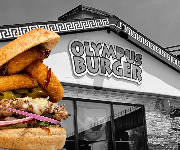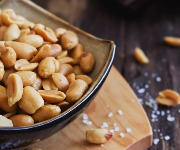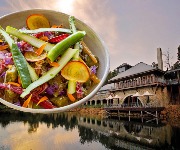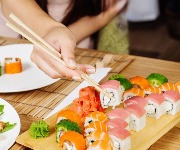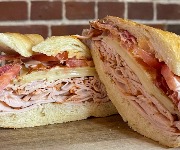Elizabeth David: the woman who changed the way we cook
Jamie Oliver, Hugh Fearnley Whittingstall and heaps of other chefs claim to have been inspired by Elizabeth David. But who was she and what made her recipes so special?
It is rare for a cookbook to be controversial. Much less when the writing is not even new, as with At Elizabeth David’s Table: Her very best everyday recipes, a posthumous compilation of David’s best and favourite recipes from Penguin.
 A cookbook might be unusual or original or even poor, but it is unlikely to have its own author turning in her grave, as David might well be if she saw her new collection, published at the end of 2010 at £25.
A cookbook might be unusual or original or even poor, but it is unlikely to have its own author turning in her grave, as David might well be if she saw her new collection, published at the end of 2010 at £25.
The reason for this is that At Elizabeth David’s Table is every bit the contemporary cookery book: a heft of a hardback volume, large type and lots of lovely photographs along with David’s recipes and extracts of her writing.
But the books which made David’s name in the 1950s: Mediterranean Food, French Country Cooking and Italian Food, had scarcely a photograph between them.
They were illustrated by John Minton, but the focus was the writing, always the writing.
It was through these recipes that David introduced Mediterranean cooking to a flavour-starved British public still enduring, and then recovering from, rationing. And by doing so, she revolutionised British cooking forever.
A highbrow approach to food
David’s approach to food was a particularly highbrow one; she didn’t do half measures or quick ‘n’ easy. The way she wrote about her own editors suggests that editing her work was not for the faint-hearted.
So it’s entirely possible she would be appalled by this diluted compilation of her work. But for readers and cooks who are too young to have read her in the 1950s, and too busy now to devour each original volume, as illuminating and incisive as they are, At Elizabeth David’s Table is a godsend – a great introduction to her writing and her recipes, and lovely to look at to boot.
More than just a cookbook
Each section is preceded by one of David’s famous essays on the topic. Her piece on living in war-time Egypt from The Spectator encapsulated her approach to food – fresh, whole food, cooked honestly: “It is curious how much more true variety can be extracted from a few of these basic commodities (the basic foods of the Mediterranean world) than from a whole supermarketful of products, none of which really taste of anything in particular, ” she wrote in 1960.
The book goes from starters and light dishes to soups, eggs, pasta, vegetables, and rice to fish & shellfish, meat, poultry & game birds, ending with sauces, sweet dishes & cakes and bread.
David treats each as a meal of its own, according to the Mediterranean way: she was celebrating and serving vegetables as meals or courses in their own right for decades while British cooks and even top restaurants thought it acceptable to dunk veg in a pan of boiling water and serve as a plain side.
Improve your understanding of food
David, who was well known for never mincing her words, never wastes them either. Her economical prose, whether about the different ways of cooking eggs or describing the French market of Cavaillon, revealed to the British a world of bright produce and true flavours we were entirely without.
To today’s readers of course, her recipes and ingredients will not seem at all exotic – rather quite provincial in confining themselves to the Mediterranean. Still, in most cases they are the originals from which the chefs we enjoy today learnt, and often then remodelled to call their own.
Reading her historical research and expert explanations will add to any keen cook’s understanding of food and eating in general.
Melon stuffed with Wild Strawberries, for example, would seem a simple enough dish. But David’s recipe explains how and when the two ingredients should be mixed to provide the best combination of their flavours.
Learn to execute classics
If you want to learn to execute classic recipes like Moules Marinière, Boeuf a la Bourguignonne, Chocolate Mousse, Summer Pudding or Mayonnaise properly, you should consult David as soon as possible.
The book begins with a slew of big food names praising her legacy; Jamie Oliver, the River Café’s Rose Gray, Sally Clarke, Simon Hopkinson and Hugh Fearnley-Whittingstall all idolize David.
Linking her with current chefs has the potential to bring her to life for new readers, and whether David would loathe the idea of being diluted or not, British cookery and eating will benefit, which can only be a good thing. Cooking and cookery writing has moved on since David’s time and if her work has to be re-fashioned to benefit a younger audience, so be it.
That said, she no doubt would hate the photographs, as she has even admitted to being displeased with the John Minton illustrations in her original books. “They are so cluttered and messy,” she wrote in a private letter. They embarrass me now as much as they did in 1950.”
If getting a 30-minute meal on the table is all you’re interested in, and there’s nothing wrong with that, then this book isn’t for you. But if you want to learn a back catalogue of prized classics or drool over her wonderful writing and the possibilities of summer holidays ahead on the Med, you won’t regret buying At Elizabeth David’s Table: Her very best everyday recipes.
Also worth your attention
Elizabeth David's moules marinière recipe
Elizabeth David's chocolate mousse recipe
Autobiography of Elizabeth David by Artemis Cooper
South Wind through the Kitchen: The Best of Elizabeth David
Most Recent
Comments
Be the first to comment
Do you want to comment on this article? You need to be signed in for this feature

